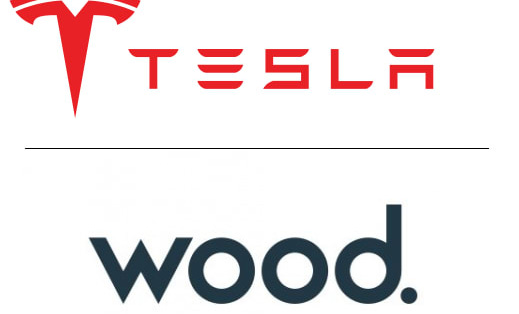Disclaimer
Value Situations is NOT investment advice and the author is not an investment advisor.
All content on this website and in the newsletter, and all other communication and correspondence from its author, is for informational and educational purposes only and should not in any circumstances, whether express or implied, be considered to be advice of an investment, legal or any other nature. Please carry out your own research and due diligence.
Fertiliser & Batteries
M&A activity has slowed this year due to rising interest rates, tightening leveraged credit markets and increasing economic uncertainty. At the general level this might suggest limited or fewer merger arbitrage and other special situations opportunities for public equity investors in the months ahead, with a recession and even stagflation now seeming to be the consensus view.
However, I think there will continue to be pockets of opportunity across certain sectors and themes, and where one is willing to think creatively. Certainly, the environment for M&A deals has become tougher, however I would expect capital-rich acquirers with strong balance sheets and who are less dependent on credit markets to move opportunistically on targets in this environment.
I see two broad categories of acquirers in this regard: firstly and perhaps most obviously, there are the private equity conglomerates (e.g. Blackstone, KKR, Apollo, Brookfield), who simply have to move on targets given their deal-driven business models and the mountains of dry powder they sit on. Secondly, there are the the large commodity groups that have printed cash over the past ~12 months having benefited from surging commodity prices. In my view, it is this latter category that may provide some interesting opportunities in the coming 12 months given the stagflationary outlook.
Within this theme, two live takeover plays in the mining sector give an indication of the possible opportunities on offer where one can successfully identify attractive targets for example. Firstly, BHP Group’s (BHP) latest offer for Australian copper miner Oz Minerals Limited (OZL) reflects a ~50% premium to OZL’s share price prior to BHP’s initial bid back in August. Similarly, Rio Tinto’s bid to buy-out the 49% that it doesn’t already own of Turquoise Hill Resources Ltd (TRQ) equates to a ~65% premium to TRQ's share price prior to Rio’s initial bid.
Both deals are yet to complete, but share similar characteristics that I expect will recur in M&A situations across the mining sector in the coming 12-24 months:
Both bids involve substantial premiums being offered to target shareholders, reflecting the ample cash reserves that large miners now have at their disposal AND the strategic value of the target assets to these acquirers; and
These transactions are focused on a strategically important commodity that is expected to experience constrained supply in the face of soaring demand due to the energy transition (in this instance copper).
Notably BHP’s CEO Mike Henry recently stated that the group will pursue a “disciplined” M&A strategy, while Rio Tinto CEO Dominic Barton indicated that it is actively seeking deals as part of its growth strategy. Such statements suggest that the sector could see a wave of M&A activity as these large groups seek to position themselves to capitalise on the energy transition and the opportunity in what BHP calls “future-facing commodities.”
An interesting idea along this theme came to mind recently when I read a Wall Street Journal article Auto Makers Shift to Lower-Cost Batteries for Electric Vehicles. The piece outlined how several major auto companies are now looking to deploy lithium-iron-phosphate (LFP) batteries in electric vehicles (EVs), on the basis that LFP batteries cost less than the nickel and cobalt-based battery technologies that are more widely used in the US and Europe currently.
It should be noted here that phosphate is one of the three main inputs used in fertilisers (along with nitrogen and potassium), with ~80%+ of phospate mined globally used to manufacture phosphate fertilisers. The WSJ piece prompted me to recall how China (the world’s largest phosphate producer) restricted phosphate exports last year to ensure sufficient domestic fertiliser supply and due to growing LFP demand, and these restrictions were further extended recently.
The implications of these recent market moves should be obvious - a commodity that was already supply-constrained and which is essential to the global food supply is now also a strategic “future-facing” one required for EV manufacturing as part of the energy transition. In simple terms, the food supply chain now has to compete with EVs for phosphate, which is likely to further constrain the supply of phosphate fertiliser.
Regular readers might recall how I recently cited fertilisers as one area of interest as part of the Three F’s of fuel, fertiliser and food within my stagflationary outlook. In seeking out equity situations along this theme, I’ve been looking at The Mosaic Company (MOS), which is the one of the top 5 largest fertiliser companies globally, and the world’s largest combined producer of potash and phosphate, with ~25 million tonnes of production capacity. In the context of the above market shifts and the stated appetite among the major miners for strategically important commodities (which now include phosphate), MOS would seem to occupy an important and somewhat unique position at the intersection of fertilisers and the energy transition.
Pulling on this thread further with my creative thinking hat on, it is interesting to note that potash is the fifth pillar within BHP’s “five pillars” diversified commodity model (alongside iron ore, copper, petroleum products and coal), with BHP progressing the construction of its $5.7bn Jansen potash mine in Saskatchewan, Canada. This prompts the question of whether a cash-rich BHP, with its now debt-neutral balance sheet might look to acquire MOS as a strategic commodity play given MOS’s significant phosphate operations and the LFP market opportunity, with the added bonus of MOS’s potash business reinforcing BHP’s own potash pillar.
Furthermore, MOS’ valuation at just 3.3x LTM EBITDA is undemanding if one has a constructive view on commodity prices. Clearly, MOS’ LTM EBITDA reflects elevated fertiliser prices which have since softened; however with the constrained supply set-up and competing demand between food crops and EVs it is not unreasonable to think MOS’s future earnings power may be structurally higher. In any event, MOS would hold additional strategic value and synergy opportunities for BHP that should allow it to take a more constructive view than the wider market on MOS’ future earnings power in an acquisition scenario.
Finally and perhaps most interestingly, MOS was once a takeover target of BHP’s back in 2013 as a potash play, before BHP instead opted to progress its Jansen project. However, the recent emergence of phosphate as a strategic EV battery commodity might be a sufficient enough reason for BHP to revisit MOS again. In my view, MOS represents a very interesting strategic value/takeover situation that is worth monitoring.
Any Other Business
Staying with the commodities theme, for these week’s AOB I’m sharing an interesting chart tweeted out by Marathon Resource Advisors recently, which I think is worth considering at the current market juncture:
If the future is to rhyme with past market cycles, the chart suggests the outlook for commodities is positive in the year ahead.
Why Not Subscribe to the Paid Tier?
If you find the ideas in this newsletter interesting, please consider signing up to the Paid Tier.
You can read more about the paid offering here.
This newsletter is 100% reader supported and free from conflicts of interest or other commercial considerations. In writing Value Situations my job is essentially to generate ideas for subscribers that supplements their own idea origination process.
Furthermore, I believe the value proposition for paying subscribers is compelling. I am a former private equity/special sits investor that has worked with one of the largest alternative investment firms in the world, and so paying subscribers will be getting thoughtful, buy-side quality ideas and analysis for a very small fraction of the cost of employing a buy-side analyst full-time.
If you find this newsletter interesting, please also consider sharing it with friends and colleagues by clicking the Share button below.
Here’s what other investors are saying about Value Situations:






Value Situations was named as one of the Top 100 Must Follow Stock Research accounts by Edwin Dorsey of The Bear Cave Newsletter:


















